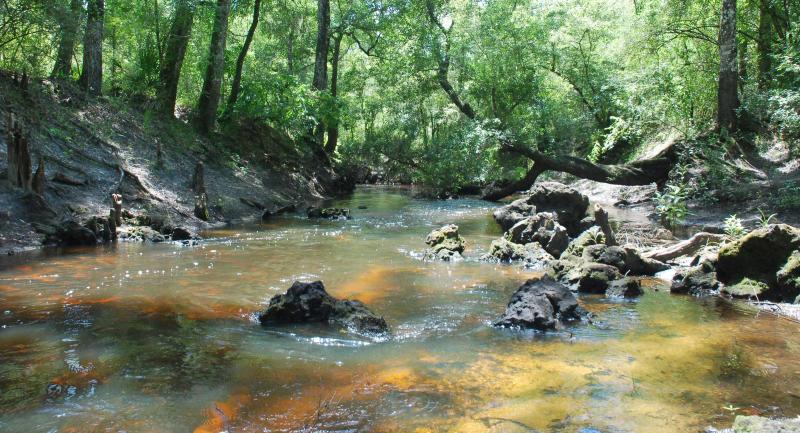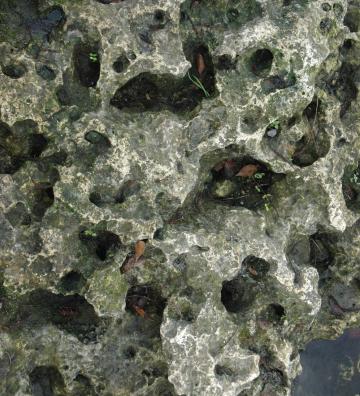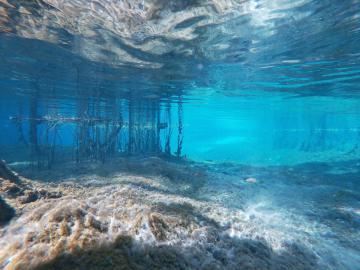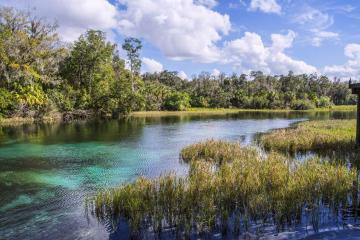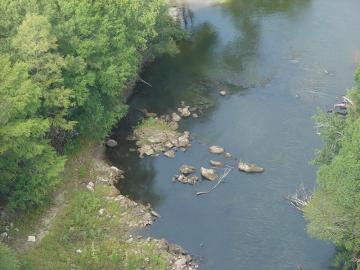Karst
Much of Florida’s landscape is composed of “karst” landforms. Karst terrain is a land surface produced when bedrock — mostly limestone in Florida — dissolves slowly over time as acidic rainwater passes through it. Karst terrain provides a direct connection between surface waters and groundwater and is characterized by springs, sinkholes and caverns.
Springs
Springs are a common feature of karst topography. They also serve as key tributaries of the Withlacoochee River watershed. A spring is a natural opening in the ground where water flows directly from the aquifer to the earth’s surface. The source of this freshwater is from seasonal rainfall that soaks into the ground, which is referred to as groundwater. Springs form when groundwater is under pressure and flows up through an opening in the ground, supplying water flow to a river or other water body.
Springs contribute approximately 2.2 billion gallons of water per day to the Withlacoochee River. Contributing springs include the Rainbow Springs Group, Gum Springs, Fenney Spring, Citrus Blue Springs and many smaller springs.
Rainbow Springs
Rainbow Springs is known for its outstanding water clarity and is popular for swimming, tubing and paddling. The Rainbow Springs Group is Florida’s fourth-largest spring in terms of discharge. It supplies water to the Rainbow River, which flows south 5.7 miles from the headspring to where it meets the Withlacoochee River.
Visit WaterMatters.org/Springs to learn more about Rainbow Springs and other springs in the region.
Rock Outcroppings
Limestone rock outcroppings can be viewed along the course of the river. These outcroppings are evidence of the region’s karst geology and are visual reminders of the interaction between surface water and groundwater in the watershed. The outcroppings also serve as natural obstructions to flow and reduce the ability to navigate the river when water levels are low.

